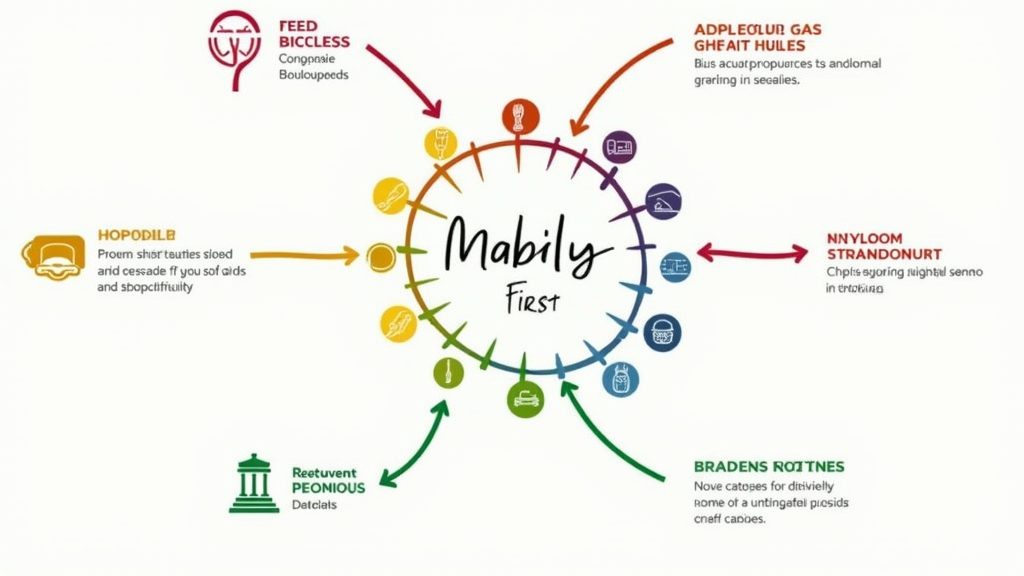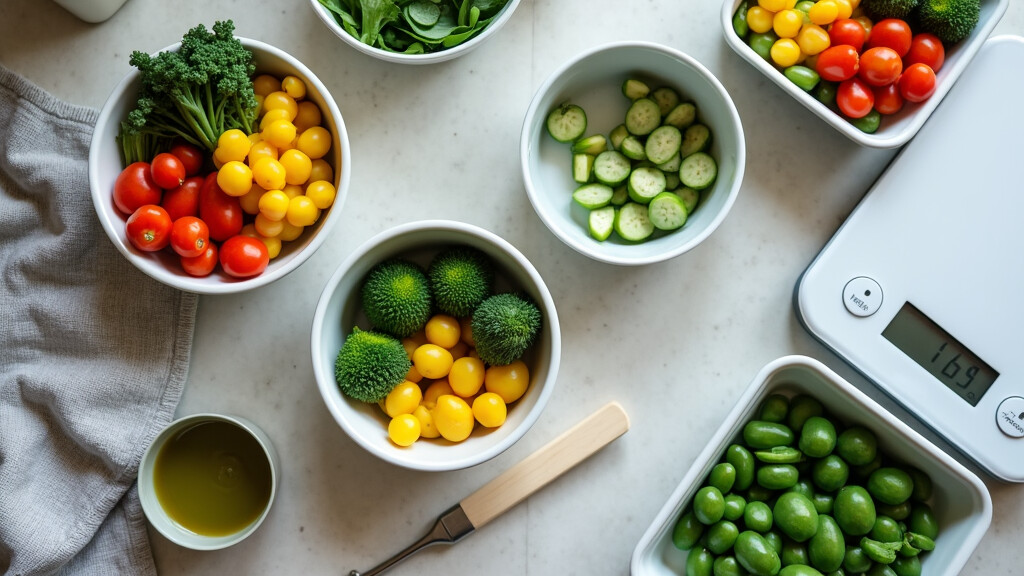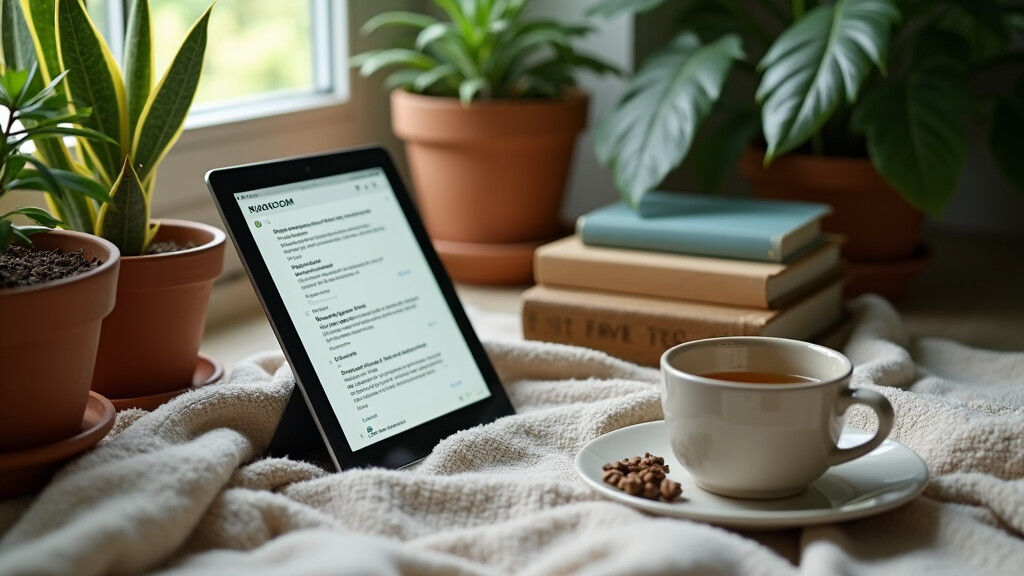Noom is making waves in the world of weight loss and wellness, and it’s been really cool to see how this digital program has reimagined what it looks like to create lasting healthier habits. The company has only been around since 2008, but it already boasts more than 50 million users in over 100 countries. There’s a good reason for that: Noom blends behavioral psychology, intuitive eating concepts, and a sleek smartphone experience that makes it surprisingly easy to follow.
If you’re wondering how Noom compares to old-school diets and why it’s constantly trending on social media, here’s the full scoop based on my own experience and careful digging into the science behind it. I’ll walk you through Noom’s core approach, the features that make it worth checking out, and some insider tips for getting the most out of the platform, plus a few related products I’ve found useful along the way!
Program Name: Noom
Website URL: Noom.com
Pricing: Free 7-day trial, then typically about $70/month (billed upfront, sometimes discounts apply)
Founders: Artem Petakov & Saeju Jeong
Community: 50+ Million Users Globally
Overall Rating: 4.5/5 average (based on personal research and user reviews)
Consumer Rating: 4.4/5 on Trustpilot
Coaching & Guidance: 4.8/5
Educational Content: 5/5
App Experience: 4.7/5
Flexibility: 4.8/5
Personalization: 4.6/5
Free Trial: Yes. Start your Noom trial here! (No credit card required for trial period)
Noom stands out in the crowded weight loss scene because it feels more like working with a knowledgeable friend than getting scolded by a strict diet app. Instead of banning foods or handing out rigid meal plans, Noom focuses on changing your relationship with food altogether using easy-to-digest lessons, habit tracking, and gentle coaching that feels surprisingly fresh.
With Noom, you’re not just counting calories or meeting targets. You’re learning why you do what you do, and building skills that genuinely stick.
Who Created Noom and Why?
Noom was cooked up by Artem Petakov and Saeju Jeong, two entrepreneurs who wanted to solve a big problem: Why are diets so hard to stick to after the excitement fades?
Petakov studied psychology and software engineering, and Jeong had a background in leadership and innovation. Together, they decided the missing puzzle piece was all about how people think rather than just what they eat.
By putting psychology front and center, they made a program that coaches users through decision fatigue, self-sabotage, stress eating, and those “oh what the heck” moments that come with pretty much any diet. Both founders are hands-on and genuinely passionate about building a tool that goes beyond weight loss and addresses wellness from every angle.
The founders are still super engaged with the community, always tinkering based on user input and new research. If you ever want to poke around and see what they’re up to, it’s all pretty transparent over on their About page.
Noom’s Core Program: What Makes It Work
Most diets hand you a list of foods to avoid, flash a “forbidden” warning every time you reach for a treat, and then leave you feeling guilty if you don’t stick to it. Noom takes things in a totally different direction. It’s focused on why you make decisions, not just what you eat for lunch.

Noom’s signature approach mixes behavioral psychology, simple nutrition science, and daily check-ins tailored to your goals. The system includes:
- Color coded food logging: Foods are grouped into green (more nutrient dense/less calorie dense), yellow, or red categories. This helps you balance meals without demonizing any one food.
- Education modules: Every day you unlock quick science backed lessons around habit change, biases, emotional eating, and stress management. The lessons are short, practical, and actually kind of fun to read.
- Daily tracking tools: You log meals, weight, exercise, and mood. This gives you a way to spot trends and triggers.
- Access to coaching and support groups: Each user can chat with a real coach (not a bot!) for personal tips and encouragement. There are also lively chat groups where you can discuss wins, challenges, and swap stories with people in the same stage of their adventure.
The program moves you through different “phases” so you don’t get overwhelmed. In my case, the first few weeks focused mostly on self-awareness and tracking, not immediate restriction. Noom puts a big emphasis on picking apart self sabotaging mindsets like “all or nothing thinking,” which is honestly refreshing compared to diet apps that want you to quit sugar on week one.
How Noom Flips the Script Compared to Old School Dieting
Noom is part weight loss app, part behavior change experiment, and part nutrition class. This blend is a big reason it feels different from your typical “eat this, not that” program.
Some ways Noom shakes up the space:
- It’s all about flexibility. Noom doesn’t force you to cut out your favorites, there’s room for pizza, ice cream, or whatever you enjoy. The goal is to build better balance and learn how to fit those foods in with less guilt.
- Food isn’t good or bad. The color coding isn’t a traffic light for “NOPE, BAD FOOD.” Instead, it just helps you aim for more of the green stuff, some yellows, and a bit of the reds. The key is moderation, not misery.
- Personalization is builtin. The signup quiz asks about your preferences, current routines, medical needs, and mindset around eating. Once you join, everything—from your daily calorie target to coaching advice—is based on your answers.
- It’s psychology forward. Most programs throw motivation quotes at you. Noom unpacks why those quick fixes don’t last and gives you practical homework to work through those common mental hangups around food and health.
- It’s all digital. Everything happens in the app, no meetings, meal replacements, or supplements. If you travel a lot or have a hectic schedule, you can still make solid progress.
What Noom Looks Like, Step by Step
The program starts with a detailed onboarding quiz. You’ll answer questions about your eating habits, triggers, activity level, stress factors, and health history. This builds out your “course roadmap,” so the lessons you see after week one are tweaked for your priorities—whether that’s emotional eating, sugar reliance, or dealing with social events without backsliding.
Each day, you’ll get:
- A bite sized module to read (I’m talking 3–5 minutes max). These cover everything from portion control to self sabotage to the science of willpower.
- Food logging and color coding to help you spot trends, not just count calories.
- Check ins with your real life coach and/or your peer group. You can chat, vent, or celebrate with people rolling through the same milestones.
- Pacing tailored to your goals. The app’s adaptive system can speed up or slow down based on your comfort level and feedback.
Behavior Change in Action: The “Why” Behind Better Habits
Noom’s secret sauce is its focus on behavior, not just willpower. In regular diets, you’re expected to “be strong” forever, and cravings are supposed to just disappear. That’s not how real life works.
Noom’s tiny lessons and daily tracking help you build awareness of what sets you off, like skipping breakfast and then bingeing on snacks after work, or eating fast food when you’re stressed or tired. Instead of shaming you for every slip, Noom’s coaching nudges you to be curious and learn from it. The goal is progress, not perfection.
Here’s a simple example from my own tracking on the app:
- Before Noom, I ate ice cream every night, then felt guilty and spiraled into “what’s the point?” thinking. This meant more ice cream the next night.
- With Noom, I started logging when and why I reached for it. I saw it was always on days I skipped lunch or had work stress. The app served up a relevant lesson about “cue routine reward” and had me test tiny tweaks: prepping snacks, eating mindfully, and being kinder to myself when I slipped.
After a few weeks, the automatic late night snacking wasn’t automatic anymore. I could still enjoy sweets, but I actually paid attention to why I wanted them, and found other ways to unwind.

Coaching & Support: Real People, Real Results
Having a coach in your pocket might sound a bit much, but on Noom it’s not just a cute feature; it’s a genuinely helpful motivator.
- Personal coaches: Certified health coaches are available for 1:1 chats weekly, so you get direct feedback based on your log history and challenges. They’re pretty quick to answer, usually replying in a day or two. I’ve gotten tips on picking smarter snacks, dealing with plateaus, or rebounding from tough weekends.
- Peer groups: You’re placed in a chat group of around 15–30 folks at the same general place in their adventure. This is optional but makes the whole experience less isolating, especially when you want to swap practical tips or just share a vent.
One thing I noticed: the coaching here isn’t judgy or pushy. It’s all about asking better questions, helping you spot patterns, and giving you room to learn what works for you. This style of coaching is something completely different from the “drill sergeant” mentality old school diet programs sometimes use.
Noom’s Food Philosophy and Color System Explained
Noom’s color based system sometimes gets misunderstood. It’s not telling you to fear carbs or ban “bad” food. Instead, it makes healthy eating visual and guilt free, while helping you understand portion size in a whole new way.
- Green foods: Generally nonstarchy veggies and some fruits, whole grains, and lean proteins (think broccoli, apples, brown rice, chicken). Low calorie, high nutrient. You fill up on these.
- Yellow foods: More calorie dense but still nutritious, like beans, eggs, cheese, yogurt, avocado, whole wheat bread. You eat these in moderation.
- Red foods: Calorie dense and lower in nutritional value by weight, like oils, nuts, red meats, pizza, desserts. Not forbidden! You’re coached to be aware of portions and mindful eating here.
Noom doesn’t force you into a specific calorie target or eating style unless you ask it to. The point is to gradually lean into more “green” eating patterns, but if you want birthday cake or takeout, you just log it and keep moving.
Noom Friendly Kitchen Essentials
To make daily tracking and meal prep easier, I’ve found a few products that pair well with the Noom lifestyle:
- Greater Goods Nutrition Food Scale , Super helpful for learning true portion sizes, especially in the early weeks.
- Prep Naturals Glass Meal Prep Containers , Great for prepping balanced green/yellow meals you can take anywhere.
- The Complete Guide to Fasting by Dr. Jason Fung , While Noom doesn’t require fasting, I found this book helpful for extra science background on hunger cues and healthy eating windows.
Tracking Progress the Noom Way
One of the big perks with Noom is all the tracking and feedback it gives you, which goes way beyond just counting calories. The app logs:
- Food intake, with color guides
- Daily weighins (optional)
- Exercise and activity
- Water intake
- Mood and sleep
The thing I found cool here: you get lots of little graphs to chart your ups and downs, but the app also helps you spot why the numbers move. If your weight goes up, Noom immediately offers tips for separating water retention from actual weight gain, so you don’t get discouraged by normal fluctuations.
There’s none of that “you’re off track, start over” nagging. Instead, the app uses those moments to teach you about set points, cortisol, and realistic goal setting, so it’s easier to stay the course even after a tough week.
Integrating With Fitness Tech
If you use a fitness tracker or smartwatch, Noom can pull in step data from Apple Health, Fitbit, or Google Fit. The process is quick and pretty accurate. I linked my Apple Watch, and the app adjusted calorie guidelines based on my steps automatically. If you’re into more advanced tracking or want reminders to stay active, this integration is pretty handy.
Noom for Special Diets and Food Allergies
Noom isn’t just for the average dieter. One thing that impressed me is just how flexible it is for people with dietary needs, including:
- Vegetarians and vegans
- Gluten and dairyfree eaters
- Kosher, halal, and other specific diets
- Managing prediabetes, hypertension, or high cholesterol
During your onboarding, you can set any of these needs, and Noom adapts both its coaching tips and the types of foods it suggests for your logs. If you have medical restrictions, the app even recommends you check with your doctor before starting, and it offers up extra reading on managing nutrition mindfully.
The Community Experience: Finding Your People
Going it alone is tough, which is why Noom’s peer groups and online forums have exploded in popularity. Once you hit week 2–3, you’ll likely be added to a group of users with similar start dates and goals. Some groups are super chatty and active; others are slower but still supportive, and you can always move to a new group if it’s not a good fit.
Common topics that come up:
- Recipe ideas for color coded meals
- Dealing with social events and holidays
- Bouncing back from setbacks or vacations
- Sharing favorite kitchen gadgets, cookbooks, or fitness gear
If you’re someone who thrives on collaboration or mutual encouragement, this crowd factor really helps keep the adventure interesting, and lets you celebrate even small wins without feeling embarrassed.

Results: What Real Users (and I) Have Seen
I started Noom myself for about four months and lost a comfortable 15 pounds, but the bigger win was feeling more in control of my snacking and way less stressed out about “good vs. bad” eating. From scanning user forums and social media, most people see:
- Early weight loss of 1–2 lbs per week (which is safe and sustainable)
- Big improvements in sticking with exercise and sleep routines
- Less binge/restrict cycles
- More confidence around social eating and eating out
Noom’s official clinical studies, published in journals like Scientific Reports (see the study), show that a majority of users maintained significant weight loss at 6–12 months. Even more promising, many report positive mental health effects, like reduced food anxiety, more self compassion, and better stress management.
What the Science Says
Noom works because it goes after the actual why behind eating and exercise, not just the what. Third party studies (read one example) indicate Noom’s psychology based system leads to higher user engagement and long term habit formation compared to many “miracle” plans out there.
Noom’s App: Usability, Features, and User Experience
The mobile app is available for both iPhone and Android, and is probably one of the nicest I’ve tested for the weight loss category. You get:
- Fast, friction free logging, just snap and enter your meals
- Easy food search database, with thousands of items (including packaged, restaurant, and home cooked meals)
- Daily, personalized lesson notifications
- Built in support for planning, goal tracking, and reminders
- A feedback driven design, so the more you use it, the more helpful it gets
The only minor complaint: Because Noom focuses on color coding, you sometimes have to double check the serving size or portion if you eat something complicated. But after a week or two, logging is second nature. Plus, the motivational reminders and surprising wisdom in the daily lessons make the process feel more rewarding than just ticking off boxes.
Noom Compatible Fitness Gear
A few top Amazon finds that I’ve found mesh really well with the Noom system:
- Fitbit Charge 6 Activity Tracker , Tracks activity, sleep, and syncs seamlessly with Noom for auto adjusting daily goals.
- Hydro Flask Flex Straw Cap Water Bottle , Keeping hydrated is a Noom tip you’ll see over and over, and this bottle makes it easy to track intake.
Noom’s Pricing Breakdown and What’s Included
Noom usually offers a 7-day free trial, so you can explore the lessons, tracking, and coaching risk free. After that, the program is mostly billed as a monthly subscription, usually running about $60-$70/month (often with steep discounts for longer commitments or during sign up promos).
- Full access to the app, all lessons, meal logging, and progress charts
- Personal coaching and group coaching sessions
- Community forums, recipe library, and wellness articles
Comparing this to the old days of paying for inperson meetings, boxed meals, or prepackaged snacks, Noom’s model makes it easier to create your own success toolkit from wherever you are.
Common Questions About Noom
- Is Noom safe for people with medical conditions?
Noom’s approach is based on general healthy eating and physical activity, but it’s not meant to treat or cure any specific condition. If you have eating disorders, are pregnant, or have strict dietary needs, check in with your doctor first. - How long do results take?
Most users report noticeably improved habits by the end of the first month, and steady progress over several months if you stay involved. The program focuses more on slow, lasting change than quick, dramatic drops. - Can I do Noom if I have a busy schedule?
Absolutely. All lessons, check ins, and tracking can be completed in minutes whenever you have time. The flexible logging system and app notifications are perfect for anyone who’s short on free time.
Product Recommendations for Busy Noomers
- CrockPot 7 Quart Programmable Slow Cooker , Prepping easy Noom friendly meals in bulk is a time saver for anyone juggling work and family stuff.
Why Noom Has Sparked So Much Buzz
Noom isn’t just another diet trend; it’s drawing attention because it actually tackles the reasons so many diets fail. By weaving in behavior science, practical tracking, and healthy community vibes, Noom makes the process of losing weight and keeping it off feel a lot more doable, even for the busiest or most skeptical folks.
Here’s what stands out to me after using Noom and poking around the app:
- Learning is bite sized and relatable, not preachy, not dull
- The coaching and groups keep you encouraged, not ashamed
- The color system boosts awareness, not anxiety
- Habits switch up for the long haul instead of burning out after a month
Noom gets that change is hard, so it gives you strategies to keep momentum through those “blah” days and celebrate non scale victories without getting obsessed with the numbers.
Major Takeaways: Why Noom Is Worth a Try
Noom is shaking up the weight loss scene for a few seriously good reasons:
- It helps you understand your own brain, not just your calorie budget
- Daily check ins and tracking make old habits less automatic
- Coaching is flexible, supportive, and never judgmental
- The community is lively and helpful, even for introverts
If you’re tired of diet rollercoasters, or just want a calmer, more flexible way to rebuild your relationship with food, Noom is truly worth a look. Whether your goal is losing the last 10 pounds or totally revamping how you treat yourself, this app packs the tools and support you need to create steady, noticeable change.
Ready to Find Out Why Noom Works?
If you’re curious about what Noom can do for you, you can head straight over to Noom.com and snag a free trial—no strings attached. You’ll tap into all the tracking, science backed tips, and personal coaching before committing to anything. It’s a solid way to see if this flexible, psychology forward app matches your style without dropping a dime.
If you have any questions, tips, or want to share your Noom adventure, feel free to drop a comment below. It’s always great to connect with others on the path to better habits and a healthier relationship with food!









